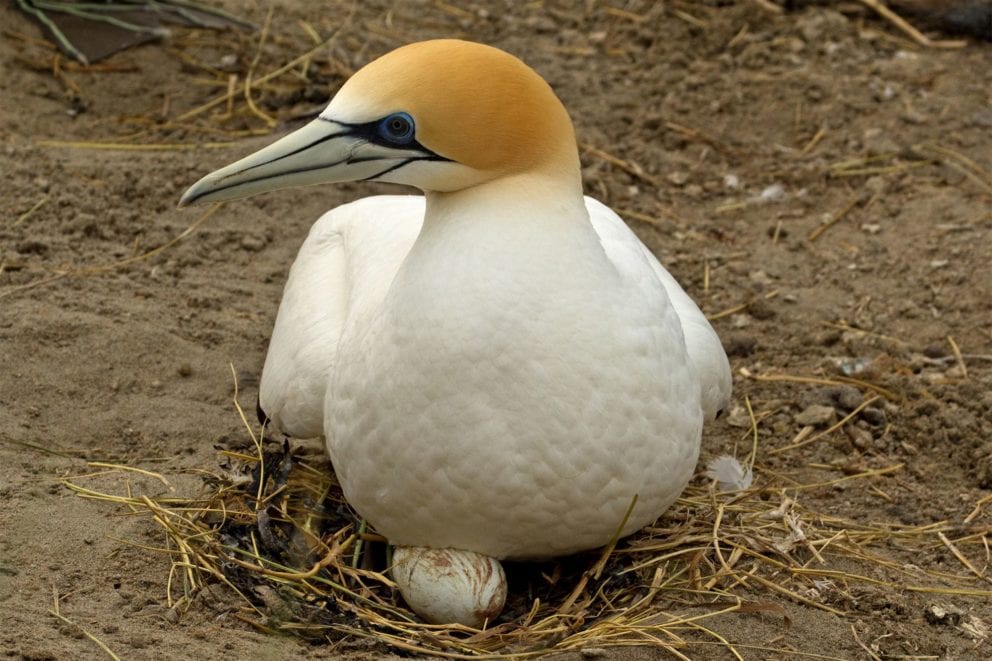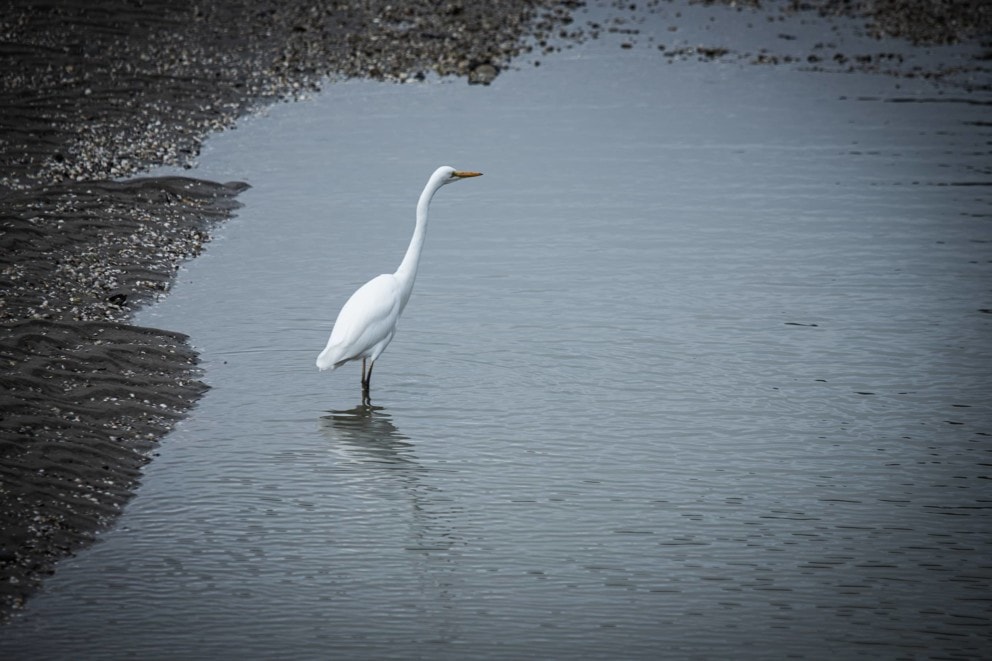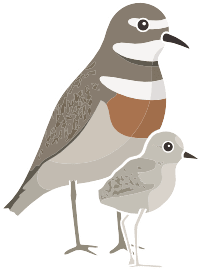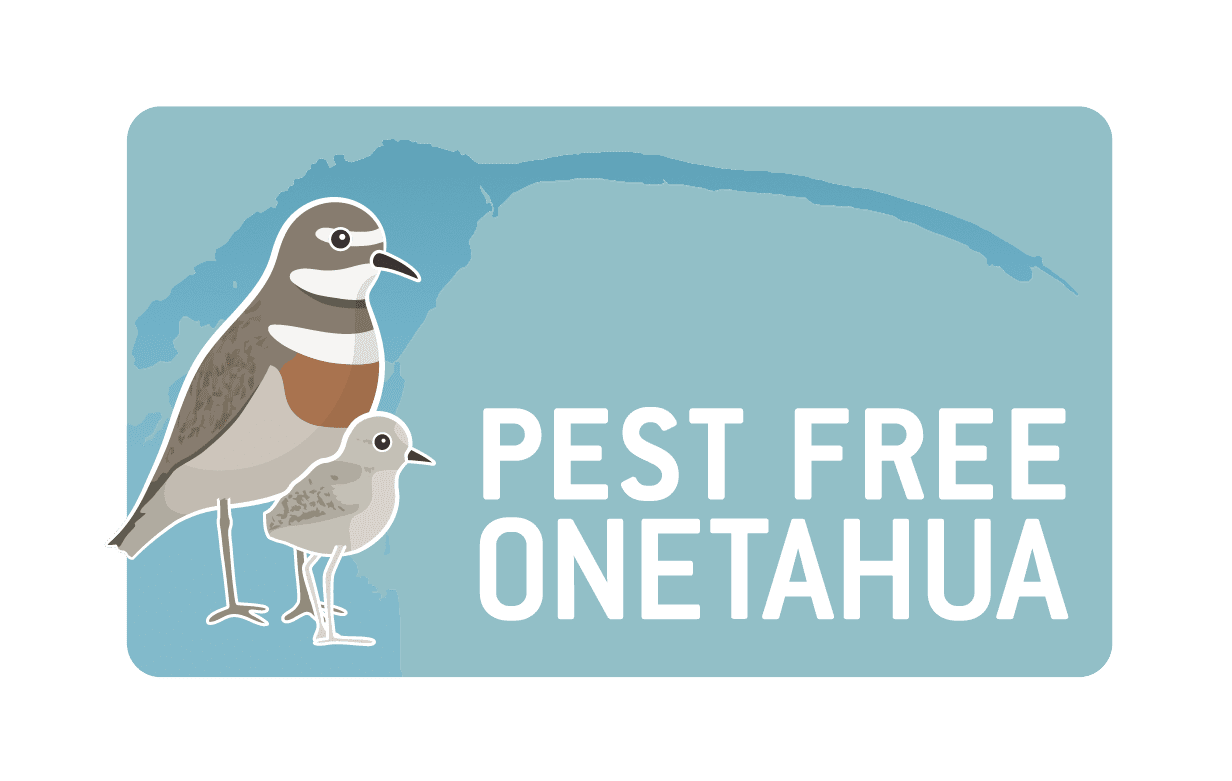What’s our plan?
Our Goal
Pest Free Onetahua aims to completely remove possums, rats, stoats and feral pigs from Onetahua Farewell Spit - and prevent their return.
Timeline
2021-22
Feasibility assessment
Community engagement
Operational planning
Baseline monitoring
2022-23
Recruit and train field team
Eradicate Pigs from Spit
Set up Trap network and barrier
2023-24
Eradicate rats, stoats, possums from Spit
Reduce densities reaching barrier
Detect and defend
2024-25
Confirm zero rats, pigs, stoats, possums on Spit
Assess ecosystem response
Plan Stage 2
2025-26
& beyond
Defend and restore and expand eradication zone
The Pest Free Onetahua Pest Eradication Plan
Taking the steps to a pest free Onetahua
The plan involves several stages for each of the four target pest species, following best practice already proven to work in other landscape scale pest eradication programmes.
The full network of traps will be installed prior to an intense population knockdown phase. This will be followed by a phase of mopping up the survivors and tracking down the last few individuals.
The project will prevent any reinvasion by pest species by a fit-for-purpose trap network. Lastly, a surveillance network will be maintained to detect any arrivals and respond immediately.
The full network of traps will be installed prior to an intense population knockdown phase. This will be followed by a phase of mopping up the survivors and tracking down the last few individuals.
The project will prevent any reinvasion by pest species by a fit-for-purpose trap network. Lastly, a surveillance network will be maintained to detect any arrivals and respond immediately.


The main steps in order of application are:
The plan involves several steps for each of the four target pest species, following best practice already proven to work in other landscape scale pest eradication programmes.
The full network of traps will be installed across the project area, prior to an intense population knockdown phase on the Spit and environs using a double-hit aerial toxin operation. This will be followed by a phase of mopping up the survivors and tracking down the last few individuals on the Spit.
The project will prevent any reinvasion by pest species by a fit-for-purpose trap network. Lastly, a surveillance network will be maintained to detect any arrivals and respond immediately.
The full network of traps will be installed across the project area, prior to an intense population knockdown phase on the Spit and environs using a double-hit aerial toxin operation. This will be followed by a phase of mopping up the survivors and tracking down the last few individuals on the Spit.
The project will prevent any reinvasion by pest species by a fit-for-purpose trap network. Lastly, a surveillance network will be maintained to detect any arrivals and respond immediately.
How was the plan designed?
A feasibility study was carried out by Onetahua Restoration, with funding from PF2050. A separate entity has since formed to implement this project – Pest Free Onetahua.
We engaged Ahikā Consultants to conduct the feasibility study on eradication of all introduced pest predators over the area from the Spit to Pakawau Bush Road. Ahikā consultants lead the Dunedin predator free project and are hugely experienced with large scale predator eradication operations just like ours.
Ahikā considered the information available about the pest species that are present, the terrain, and the likely benefits of eradication. They considered the methods that are being successfully employed by the other big predator eradication projects around the country and the methods that are in research and development. They considered whether it was feasible to eradicate the main pests without using broadcast pesticides.
At the same time we asked the local community for their views on the project and the use of pesticides. We learned that the majority of the population living close to the project area and the wider Golden Bay population want these pests gone
Taking on board the community views, Ahikā developed a plan of what can be feasibly done and how to do it. This was peer reviewed by other experts including from Project Janszoon and Pest Free Banks Peninsula, DOC and TDC.
Through this process the mission was divided into stages. Rather than attempting to eradicate all introduced pest predators from the Spit to Pakawau Bush Road, the project has been reduced to a more manageable first stage of eradication on the Spit and suppression over the buffer zone to prevent return to the Spit.
Now the challenge is to develop a detailed operational plan and convert that into action. We invited a group of expert practitioners to be part of our Technical Advisory Group to guide us in this process. Alongside this we have a community advisory group made up of representatives from TDC, DOC, Project Mohua, landowners, and local businesses to give us a local perspective. Together we believe this will give us the best chance of success.
We engaged Ahikā Consultants to conduct the feasibility study on eradication of all introduced pest predators over the area from the Spit to Pakawau Bush Road. Ahikā consultants lead the Dunedin predator free project and are hugely experienced with large scale predator eradication operations just like ours.
Ahikā considered the information available about the pest species that are present, the terrain, and the likely benefits of eradication. They considered the methods that are being successfully employed by the other big predator eradication projects around the country and the methods that are in research and development. They considered whether it was feasible to eradicate the main pests without using broadcast pesticides.
At the same time we asked the local community for their views on the project and the use of pesticides. We learned that the majority of the population living close to the project area and the wider Golden Bay population want these pests gone
Taking on board the community views, Ahikā developed a plan of what can be feasibly done and how to do it. This was peer reviewed by other experts including from Project Janszoon and Pest Free Banks Peninsula, DOC and TDC.
Through this process the mission was divided into stages. Rather than attempting to eradicate all introduced pest predators from the Spit to Pakawau Bush Road, the project has been reduced to a more manageable first stage of eradication on the Spit and suppression over the buffer zone to prevent return to the Spit.
Now the challenge is to develop a detailed operational plan and convert that into action. We invited a group of expert practitioners to be part of our Technical Advisory Group to guide us in this process. Alongside this we have a community advisory group made up of representatives from TDC, DOC, Project Mohua, landowners, and local businesses to give us a local perspective. Together we believe this will give us the best chance of success.

Developing the plan for a pest free Onetahua
A feasibility study was carried out by Onetahua Restoration, with funding from PF2050. A separate entity has formed to implement this project – Pest Free Onetahua.
We engaged Ahikā Consultants to conduct the feasibility study on eradication of all introduced pest predators over the area from the Spit to Pakawau Bush Road. Ahikā consultants lead the Dunedin predator free project and are hugely experienced with large scale predator eradication operations just like ours.
Ahikā considered the information available about the pest species that are present, the terrain, and the likely benefits of eradication. They considered the methods that are being successfully employed by the other big predator eradication projects around the country (now 20 of them) and the methods that are in research and development. They considered whether it was feasible to eradicate the main pests without using broadcast pesticides.
At the same time we asked the local community for their views on the project and the use of pesticides. We learned that the majority of the population living close to the project area and the wider Golden Bay population want these pests gone
Taking on board the community views, Ahikā developed a plan of what can be feasibly done and how to do it. This was peer reviewed by other experts including from Project Janszoon and Pest Free Banks Peninsula, DOC and TDC.
Through this process the mission was divided into stages. Rather than attempting to eradicate all introduced pest predators from the Spit to Pakawau Bush Road the project has been reduced down to a more manageable first stage of eradication on the Spit and suppression over the buffer zone to prevent return to the Spit.
